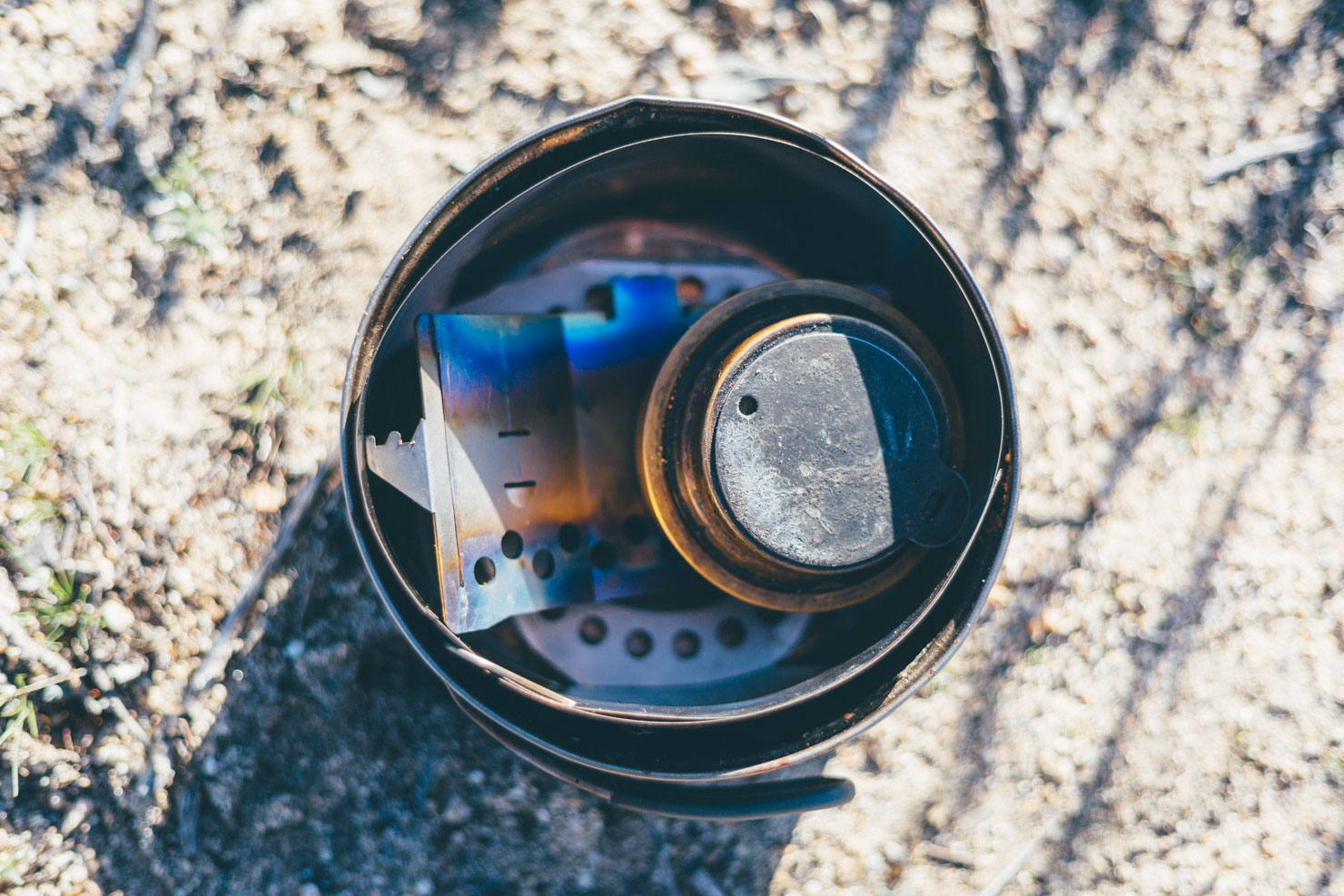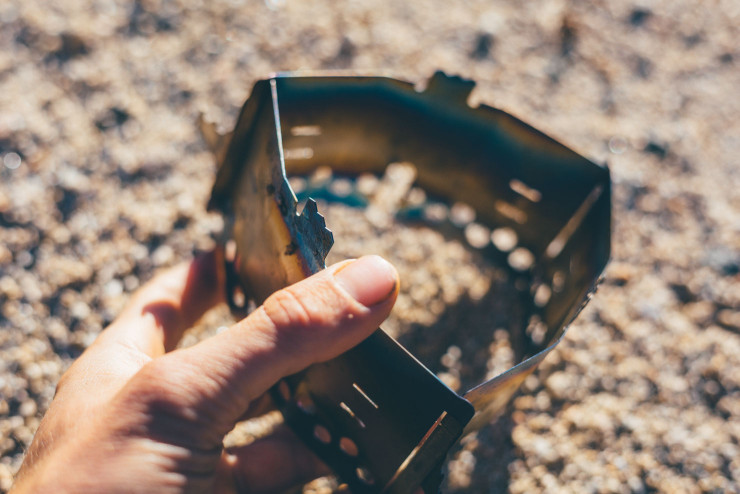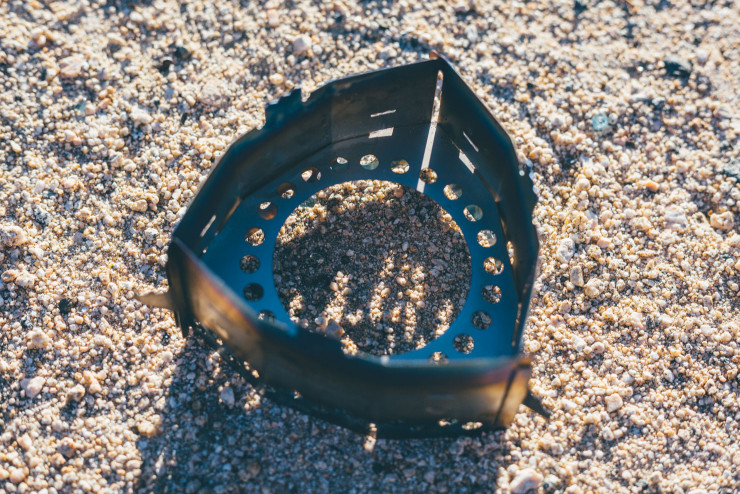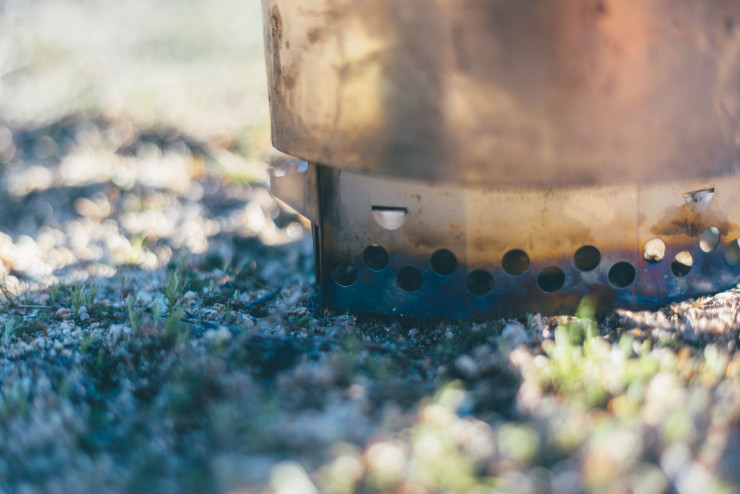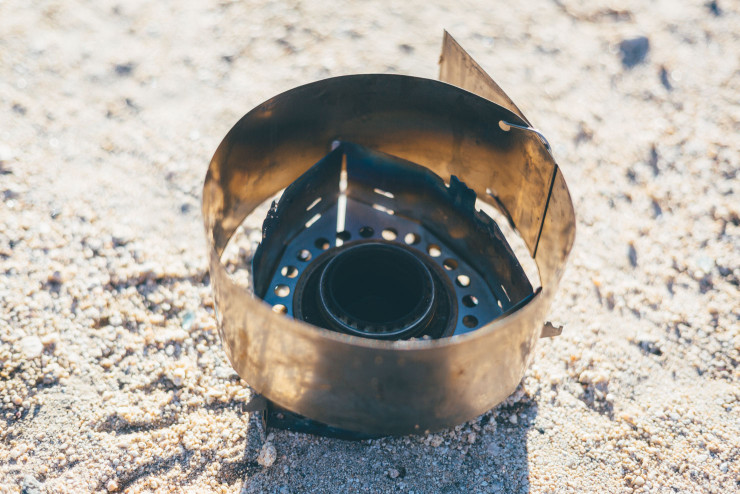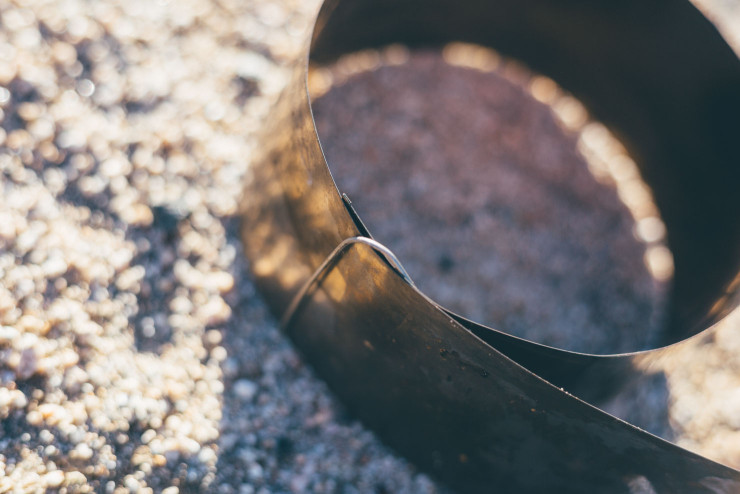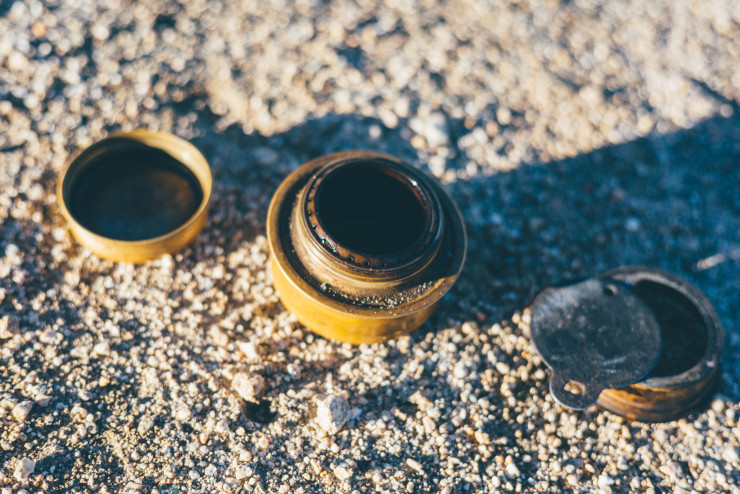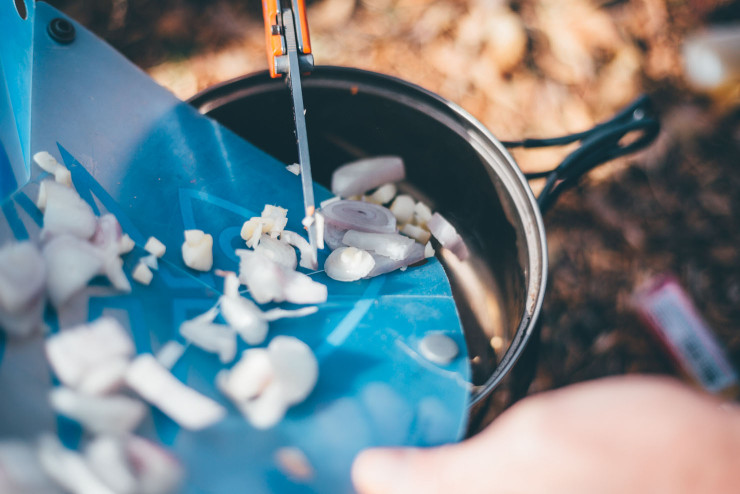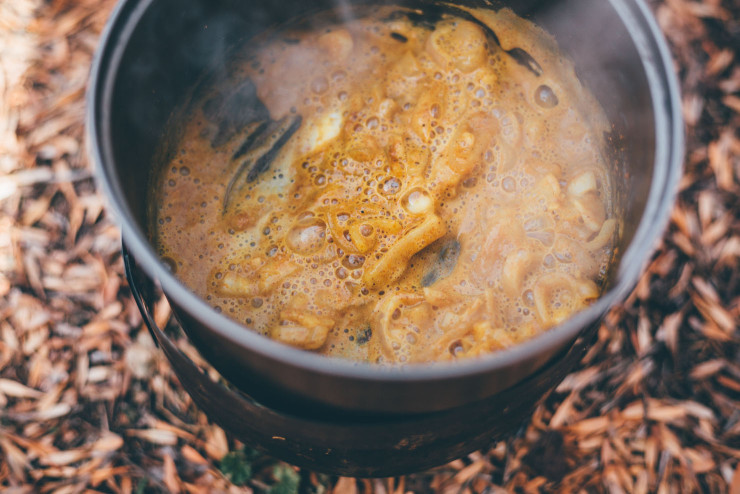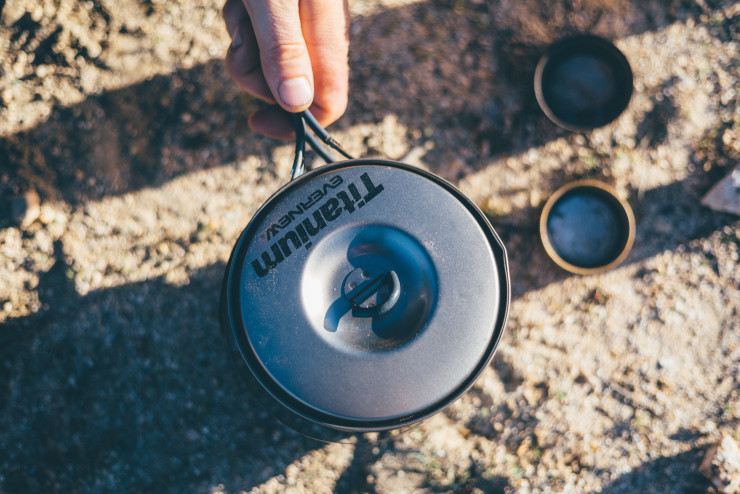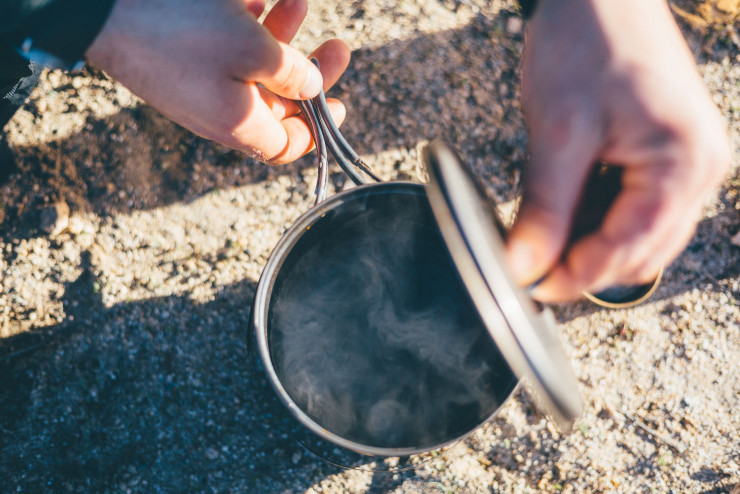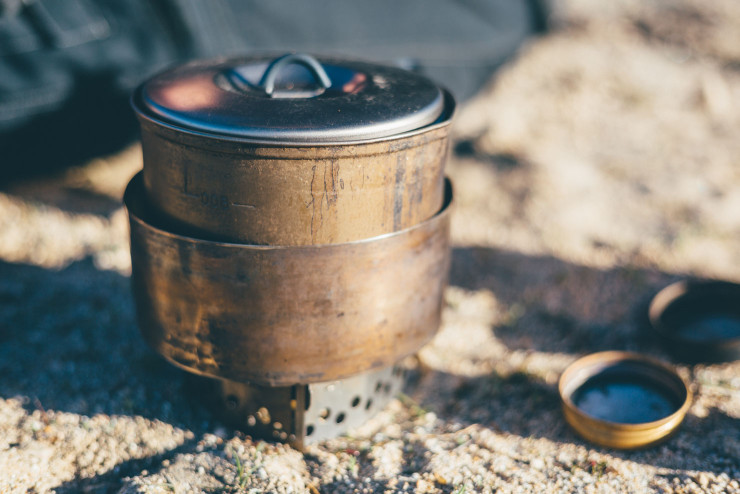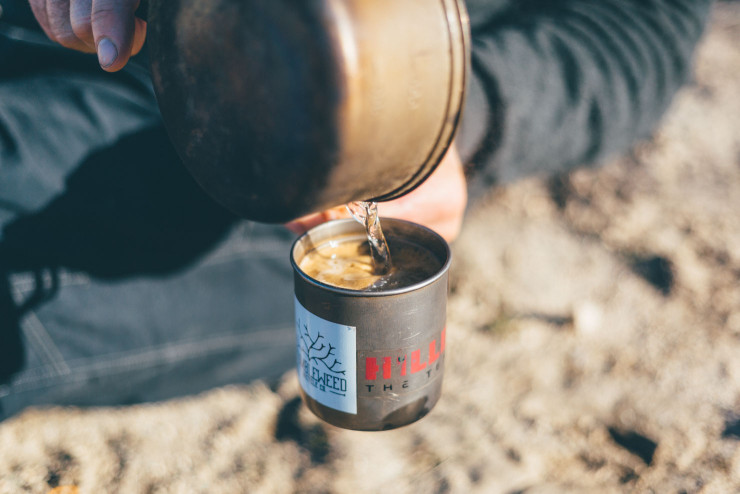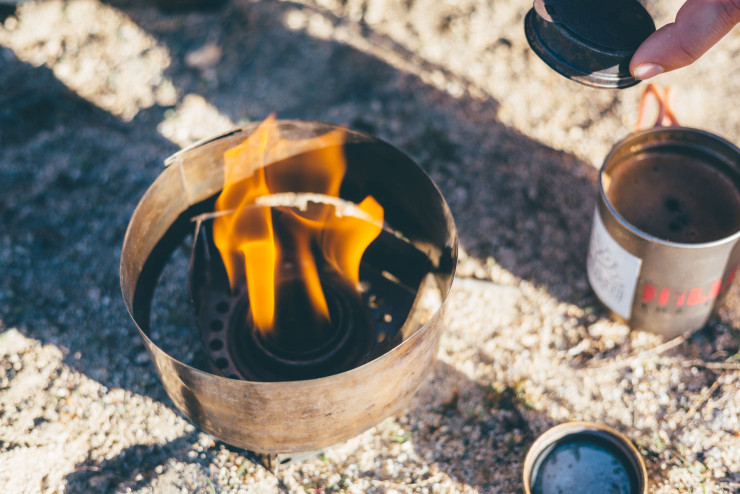Clikstand Stove Review: the Sound of Silence.
The Clikstand is a lightweight, minimal stove system designed around the classic Trangia alcohol burner. Diminutive enough to pack in a framebag, it’s also perfectly proportioned for a gourmet cooking campout. Read on to discover why we like it so much…
During my early years of bicycle touring, I never left home without my multi-fuel stove — MSR’s Whisperlite, the expedition cyclist’s perennial favourite. Mine travelled faithfully with me throughout Asia in a love/hate relationship, largely dependent on the fuel I could track down and how clean I could keep it. More often than not, it stunk of gasoline. It covered my fingers in soot. Sometimes it refused to splutter to life until I’d stripped it down and painstakingly cleaned an array of seals and tiny parts. Yet only rarely did I fail to cajole it into a blazing, roaring, furious source of heat that guaranteed a content belly at the end of a long day’s ride.
Since moving to more lightweight, bikepacking-style setup, I’ve found myself erring towards simpler, less complicated ways of cooking. Over the course of this change, I’ve built my own stoves and tinkered with different fuel sources — including Esbits and twigs — before finally settling on the Clikstand, a US-made support designed around the classic Trangia alcohol burner. If you’re from the UK, chances are the name Trangia rings a bell: you probably grew up lugging one of the brand’s potsets around in the Scouts or on obligatory high school campouts. Trangias have long been famed for their safety, ease of use, and stability. But as a complete cooking system they’re notoriously bulky and somewhat heavy.
Which is exactly where the Clikstand comes in. Think of it as a pared down version of the traditional Trangia cookset. It uses the same robust, ultra-reliable burner, replacing the typically bulky windshield and support with an extremely light, breakaway alternative.
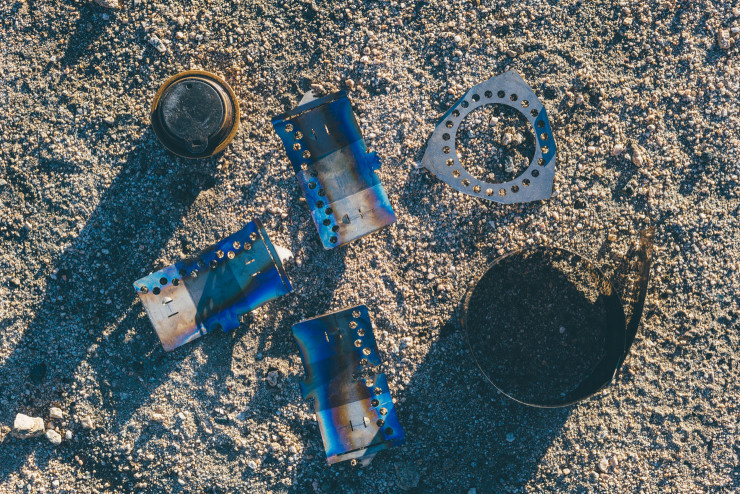
As such, the Clikstand consists of four foldaway pieces that slot neatly together to form the support. As pictured above, there’s an optional, adjustable windshield, which I’d highly recommend. Piecing them together takes a little dexterity, as each part needs to be gently sprung into place. Once assembled, it’s simply a case of pouring denatured alcohol into the Trangia burner, lighting it, and placing it in its holder. The Clikstand is also compatible with both Evernew’s Titanium Burner and solid fuels, using optional adaptors. The windshield size is easily adjusted, depending on the size of pot you’re using. Both it and the support are available in titanium or stainless steel.
To ensure compatibility with the width of the support, Clikstand lists a number of suggested potsets on its site; the full lowdown can be found on the here. Included amongst them is the 900ml titanium model from Evernew ($53) that I use, as seen in this post. Built with such a pot in mind, the Clikstand nests neatly within, with room for a little extra food too. Alternatively, there are modifications that can be made to support smaller pots too.
A note on the Trangia and other alcohol burners
Developed in Sweden, the humble Trangia burner has been around since the 1950s, proving itself in the demanding testing grounds of both military and school uses. Made from brass, it’s a simple, reliable, and extremely solid piece of gear. Penny stoves are admittedly much lighter – see Logan’s excellent tutorial here on how to make one – but they’re also considerably more delicate. As an ultralight alternative, Evernew makes a titanium version of the Trangia that will barely tip your kitchen scales, weighing in at just 14g (0.5oz). Both are compatible with the Clikstand when used with the optional adaptor. However, neither the penny stove nor Evernew’s lookalike include the original’s nifty screwtop closure. The ability to store fuel within the Trangia burner is a real advantage. It means you don’t need to 1) measure out exactly how much denatured alcohol you’ll need per meal and 2) futilely attempt to pour your leftovers back into your bottle. The Trangia’s simmer control works very well too, saving a considerable amount of fuel once a rolling boil is reached, while also allows the burner to be adjusted to a flame suitable for more subtle campside recipes. As with the whole system, there’s a short learning curve to learn its intricacies. Adjusting the simmer control while cooking is a little fiddly and there’s a certain art when using it to snuff out the flame. Trangia stoves are available from many specialist camping stores or on Amazon for just $15. Evernew’s ti equivalent is around $40 and a penny stove costs next to nothing to make.

I used the stainless steel Clikstand throughout my journey across Latin America. In use, it’s extremely stable and proved effective in all but the windiest of conditions. Mine have seen service at high altitudes in the Andes to cook quinoa and rice. It’s extremely user-friendly, it’s relaxing to use, and burns cleanly and quietly. Boiling times are admittedly slower than a multi-fuel system stove. And there’s noticeably less oomph. For this reason, I wouldn’t recommend a Trangia for winter trips that require melting large amounts of snow. Denatured alcohol can also be a stubborn to light in extreme cold. If you’re expecting freezing temperatures, stow your fuel bottle inside your tent.
Fuel can be stored in plastic bottles and is far less pungent to handle than the likes of gasoline and diesel. Depending on where you find yourself in the world, tracking down denatured alcohol can sometimes demand persistent enquiries, even foraging in parts of towns otherwise unknown. In Peru, for instance, it’s sold (and consumed) under the guise of alcohol pura, available under the counter in village stores throughout the Andes. In the Republic of Georgia, it’s easily sourced in small bottles from omnipresent pharmacies. In the US, HEET gasline antifreeze is an effective, albeit more toxic alternative. It comes in small yellow bottles, sold at most gas stations in mountain states, as well as Walmarts and Autozones. Only in Mongolia did I come up empty, perhaps in part due to the language barrier. For this reason, knowing the local name for denatured alcohol/methylated spirits is especially useful; this site is a handy source of info.
Given the variables of wind, altitude and cooking menus, a 350ml (12oz) bottle will typically last me up to a week – like all stoves, more will be consumed at high elevations and in gale-force situations. As a general rule, aim for denatured alcohol/methylated spirits that are 95% and above for a strong, reliable flame. Additive-free ethanol burns cleanest and most efficiently but is generally more expensive and can be harder to find.
Without going into all advantages and disadvantages of multi-fuel systems and canister bottles, here’s some pros and cons of alcohol stoves:
Pros
- Minimal waste compared to a canister system.
- Quiet and relaxing to use.
- Maintenance free – no fuel lines to clog or parts to break.
- Relatively clean fuel can be stored in a plastic bottle. More can be carried as and when it’s needed.
- Easy to use compared to a multi-fuel system.
- Fuel is cheap and found in many pharmacies, paint shops, and hardware stores the world over.
Cons
- Slower than a pressurised system. A little patience required!
- Less dense fuel – so more denatured alcohol needs to be carried.
- Can be stubborn to light in extreme cold.
- Overseas, suitable denatured alcohol/methylated spirits can take time tracking down until you know its local name.
- Not suitable for melting large amounts of snow.
In terms of the system as a whole, there are certainly more compact alternatives on the market. But if you want to expand your palette beyond rehydrating a freeze dried meal or a pack of ramen, be aware that taller, narrower cooksets can be tricky to actually cook with. The wider surface area of pots like Evernew’s 900ml and 1300ml models encourage more adventurous recipes; there’s room enough for frying vegetables without burning them to a cinder. For my uses, the Clikstand strikes a great balance between usability, size, reliability, and weight. Unlike systems that use canisters, such as the MSR Pocket Rocket, there’s little waste, especially if you’re decanting your fuel from a large can stored at home. As for campside atmosphere, I certainly prefer the quieter, mellower cooking ritual compared to a multi-fuel system stove and its taxiing aircraft soundtrack.
- Complete ti setup, T-2:77g (2.7oz), $96.90
- Complete stainless steel setup, S-2:131g (4.6oz), $57.90
- Place of manufacture: California, USA
- Contact: Clikstand
- Trangia stove: 110g (4oz), $15
- Evernew 900ml pot: 109g (4oz), $55
Note that the Clikstand prices above include the optional windshield. Note that ‘factory seconds’ with only minor cosmetic scuffs are often available.
Wrap Up
There’s several items on my gear list that give me a small amount of joy every time I use them, no matter how many times I do so. The Clikstand is one of them. It’s simple and very stable. It works in every condition I throw at it, including high winds. It’s overseas travel-friendly. And it encourages proper cooking, rather than simply boiling up water. The Trangia’s screwtop closure and simmer control also make it very practical to use on a daily basis, even if it’s not as light as its homemade or titanium equivalents. Either way, you can always use the burner that suits your needs and pocket best.
Is the titanium support worth the extra cash? Probably not, given the relatively minimal weight savings over the more affordable stainless steel equivalent. But having used mine across South America and beyond, I consider the Clikstand to be such a wonderful, refined system that I can’t deny a certain sense of satisfaction in owning the lighter of the two. I’d consider it worth the investment if you’re constantly in search of the ‘perfect setup’. Because for me, that’s exactly what the Clikstand is.
Please keep the conversation civil, constructive, and inclusive, or your comment will be removed.






